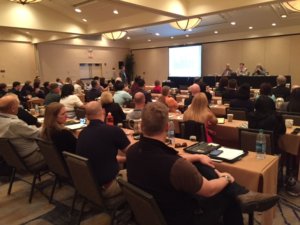 For the last few sunny days, a/e ProNet members from across the country have gathered in Scottsdale, Arizona for our annual Spring Meeting (March 1-3). a/e ProNet brokers are independent. Technically, we operate as competitors. Membership is by invitation only. We come together voluntarily as recognized leaders in our industry, meeting the insurance needs of architects and engineers. Our combined premium volume, experience, and national reach make our meetings an attractive target for insurance companies, premium finance companies, and other professionals. With our two annual meetings, we keep our fingers on the pulse of the insurance industry and advocate for our clients.
For the last few sunny days, a/e ProNet members from across the country have gathered in Scottsdale, Arizona for our annual Spring Meeting (March 1-3). a/e ProNet brokers are independent. Technically, we operate as competitors. Membership is by invitation only. We come together voluntarily as recognized leaders in our industry, meeting the insurance needs of architects and engineers. Our combined premium volume, experience, and national reach make our meetings an attractive target for insurance companies, premium finance companies, and other professionals. With our two annual meetings, we keep our fingers on the pulse of the insurance industry and advocate for our clients.
The Spring Meeting
The purpose of our Spring meeting has changed over the last three decades. Invited representatives from the companies and industries mentioned above present to the group on educational topics. This year, attorney David Ericksen of Severson & Werson in San Francisco also organized a series of five panel discussions:
- Non-Traditional Project Delivery Methods
- Cyber Communication Conundrums
- The Prime/Sub Team: Roles, Responsibilities & Risks
- Contract and Claims Connections
- Material Transparency & Building Green
Ericksen staffed these panels with underwriters, claims adjusters, etc. from companies like Victor O. Schinnerer, AXIS, Hanover, RLI, Beazley, and several other a/e ProNet sponsors. The panel environment increases the awareness of each company regarding their competitors’ products and services. As well, it gives our members a quick, comprehensive understanding of the market’s overall perspective on these issues. Continue reading “a/e ProNet Holds Annual Spring Meeting in Arizona”
